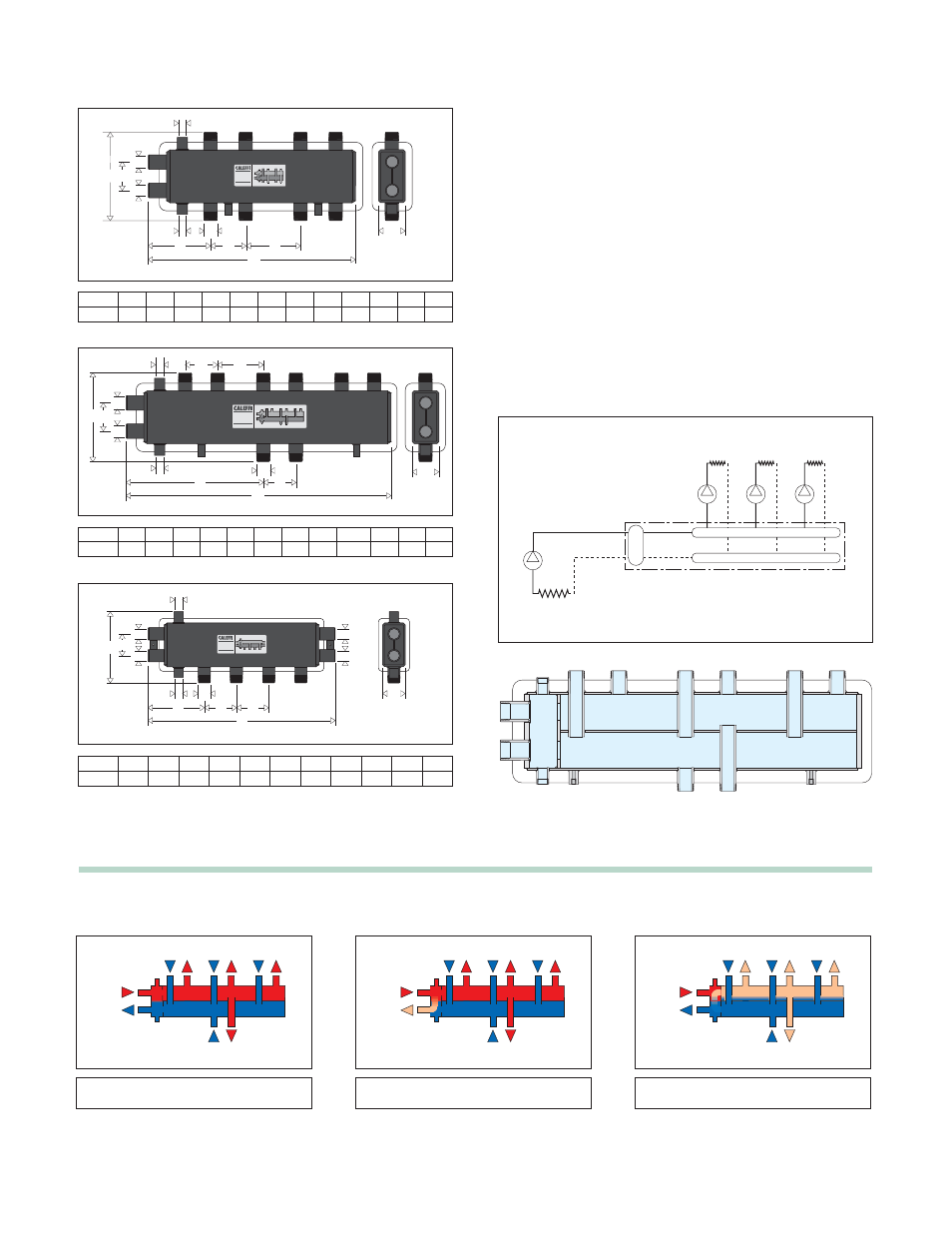Infloor Hydrolink 31090-31092 User Manual
Page 2

Dimensions
A
C
B
C
H
I
L
D
E
F
G
A
M
A
A
C
B
C
E
H
I
G
D
F
L
A
C
B
C
E
G
H
F
D
A
L
A
A
I
38487
Patent Application
No. MI2001A 001270
Series 559
HydroLink
™
Pmax 90 psi - Tmax 230
°
F
Patent Application
No. MI2001A 001270
38503
Series 559
HydroLink
™
Pmax 90 psi - Tmax 230
°
F
38485
Patent Application
No. MI2001A 001270
Series 559
HydroLink
™
Pmax 90 psi - Tmax 230
°
F
A
1 1/4”
B
1”
D
15
3/8
”
E / F
3
9/16
”
G
5
1/2
”
C
1/2”
Part
31092
H
3
1/8
”
I
9
7/8
”
L
29
15/16
”
M
3
1/8
”
Weight
(lb)
39
Volume
(gal)
2,6
A
1”
B
1”
D
6
1/8
”
E
3
9/16
”
F
20
1/2
”
C
1/2”
Part
31090
H
7
11/16
”
I
3
9/16
”
L
2
3/8
”
Weight
(lb)
16
Volume
(gal)
1
A
1 1/4”
B
1”
D
6
5/16
”
E
3
9/16
”
F
5
1/2
”
C
1/2”
Part
31091
G
20
7/8
”
H
3
1/8
”
I
9
7/8
”
L
3
1/8
”
Weight
(lb)
29
Volume
(gal)
1,8
Operating principle
When a single system contains a primary generating circuit, with its
own pump, and a secondary user circuit, with one or more
distribution pumps, operating conditions may arise in the system
where the pumps interact, creating abnormal variations in flow
rates and pressures in the circuits.
In the HydroLink there is a low pressure loss zone, which enables
the primary and secondary circuits connected to it to be
hydraulically independent of each other;
the flow in one circuit
does not create a flow in the other if the pressure loss in the
common section is negligible.
In this case, the flow rates passing through the respective circuits
depend exclusively on the flow characteristics of the pumps,
preventing reciprocal influence due to connection in series.
Downstream of the hydronic separation zone are the flow and return
manifolds to which the various secondary distribution circuits can
be connected.
Three possible hydronic balance situations are shown below as
examples.
primary circuit
secondary circuit
Gp
G
S1
G
S2
G
S3
G
S4
Gp
G
S1
G
S2
G
S3
G
S4
G
S1
G
S2
G
S3
Gp
G
S4
Gprimary = Gsecondary (G
S1
+G
S2
+G
S3
+G
S4
)
Gprimary > Gsecondary (G
S1
+G
S2
+G
S3
+G
S4
)
Gprimary < Gsecondary (G
S1
+G
S2
+G
S3
+G
S4
)
